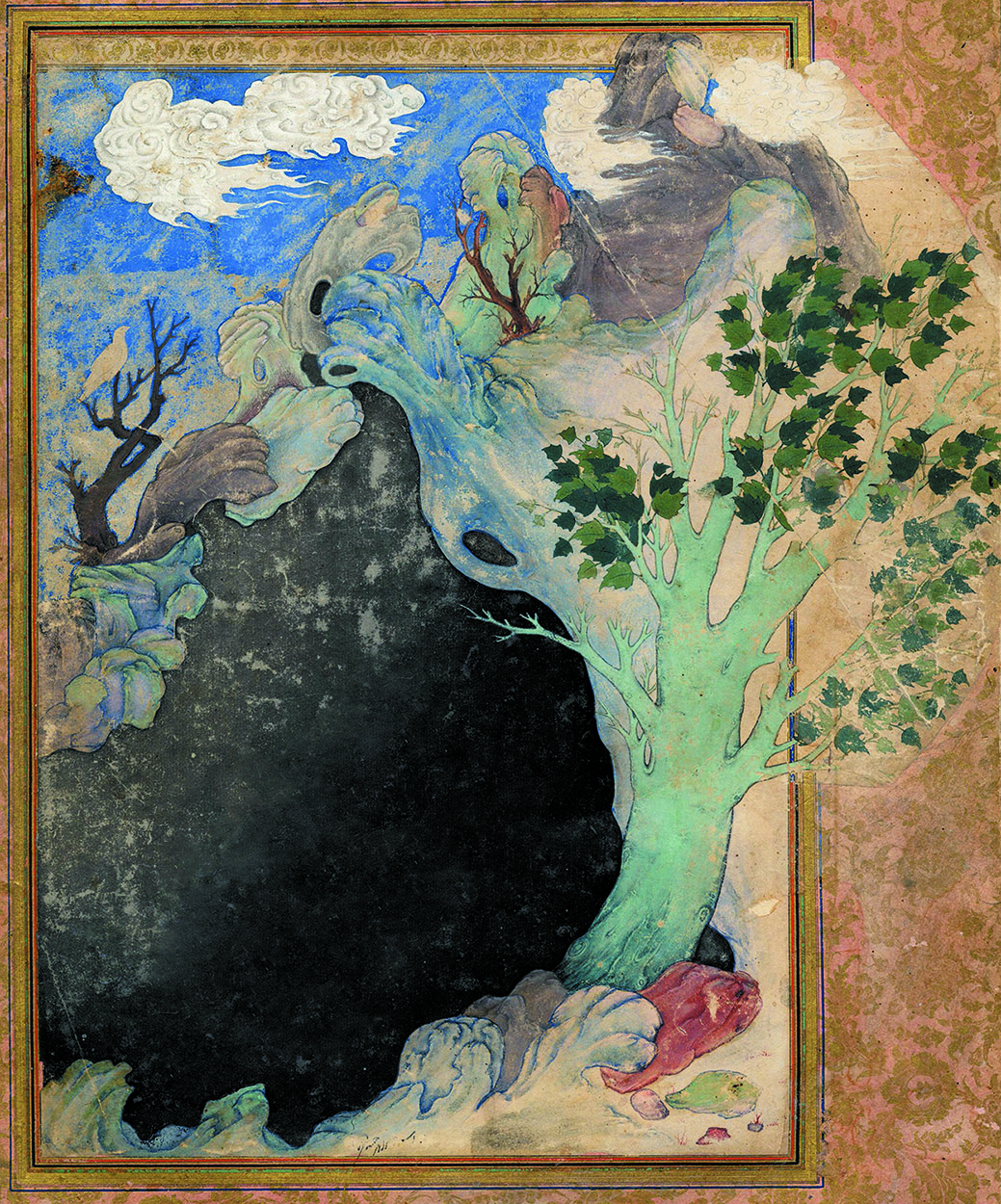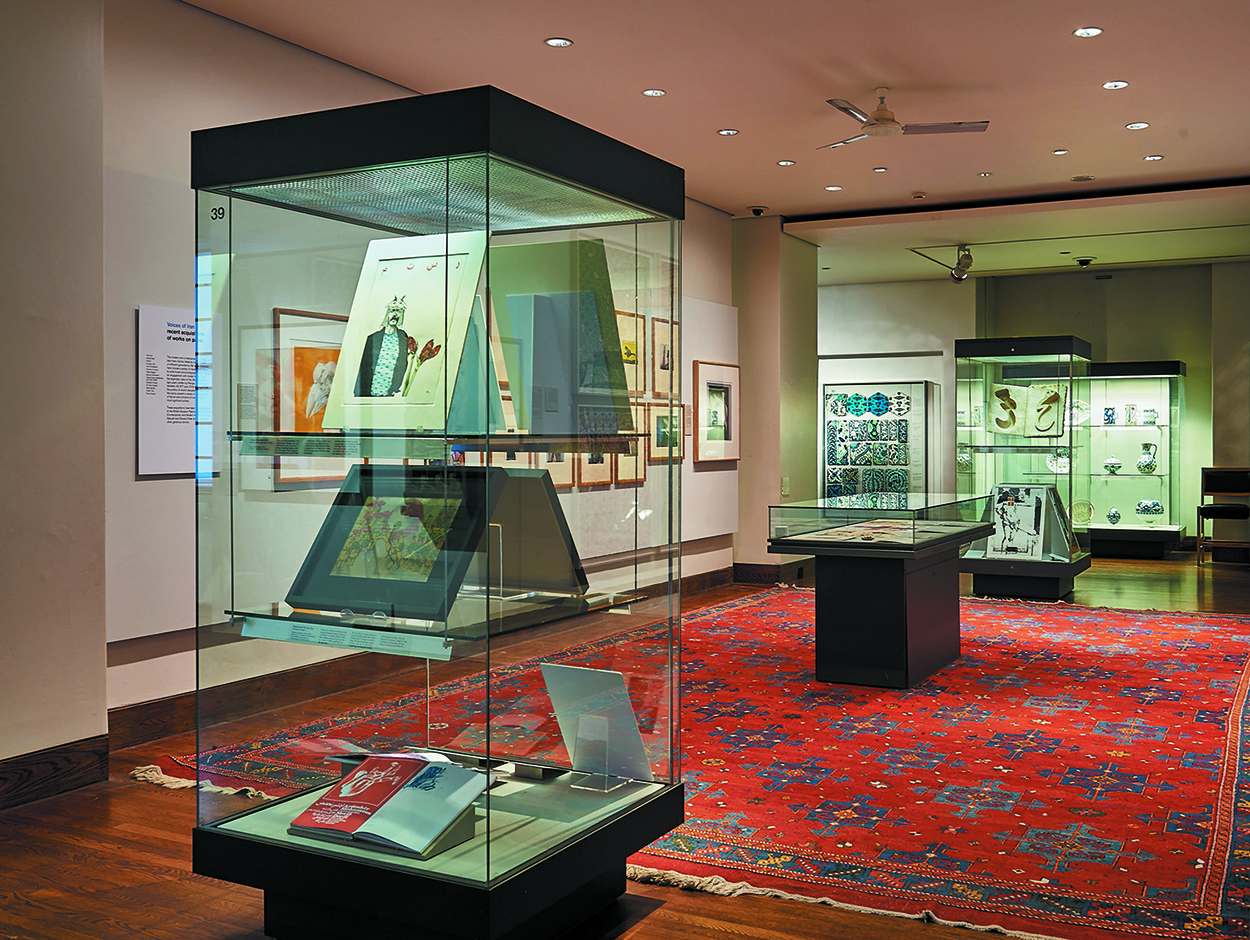Shows
“Iranian Voices: Recent Acquisitions of Works on Paper”


The intense geometric patterns of Parastou Forouhar’s print Red is My Name, Green is My Name - Karree (2008) bring together the layers of cultural history, political activism and lived experience that make “Iranian Voices,” a group exhibition spanning over several decades of Iran’s history, so fascinating. Curated by Venetia Porter of the British Museum’s Islamic and contemporary Middle East department, the works in “Iranian Voices” showcase the museum’s latest acquisitions of works on paper, and are shown alongside the permanent display of Islamic art. This curatorial framework allows for cross-generational linkages to be made, such as the designs of Forouhar’s digital drawings with Persian textiles or the mirroring of the repeated patterns evident in Tarlan Rafiee’s series “30 Years” (2015) with the nearby display of 16th century Iznik ceramic tiles.
The fantastical and phantasmagorical nature of several works seems to reflect the sudden shifts of Iran’s history over the last 50 years. The chronology of dictatorship, revolution, war and counter-revolution is set out in Mitra Tabrizian’s black-and-white photomontage Surveillance (1990). The reference in the work to the British government’s role in the imposition of the Shah creates some discomfort around the institutional framing of the exhibition—the British Museum itself as a state institution has its own part in the narrative of betrayal Tabrizian presents. The powerful central female figure elevated on her plinth presents a positive image perhaps for the artist’s personal resilience and creative autonomy. Lying in the foreground of the composition is a woman shot for wearing Western dress, a shocking reminder of the barriers to this freedom of expression. It is noteworthy and commendable that nearly half the artists presented are women. The background to Tabrizian’s tableaux of recent history is a crowd of people who face us just as an audience faces the stage. The artist suggests the complications of her own position being based in London and standing outside of events taking place in her home country. Surveillance recalls a central moment of Don DeLillo’s novel Mao II (1992) where the character Karen watches scenes of the frenzied mourners at Ayatollah Khomeini’s Tehran funeral play out on a television in New York. The book’s theme of the artist’s role and responsibility when confronted with the terror of mass movements echoes in the exhibition.

There is a large section of the show dedicated to both the early and later works of Bahman Mohassess (1931–2010). Two prints from 1957/8 reflect the stereotype of the Joycean émigré modernist experimenting with a range of influences and styles, beginning with cubism and European primitivism. Upon first glance, Pour Munch (1991) appears to be another borrowed piece of European modernism but here in the exhibition, resonates as an expression of raw terror that responds to Forouhar’s patterned drawings displayed just opposite. The group of sinister eyeless figures shouting in Personaggi in Citta (1996) recalls Francis Bacon’s trademark disembodied mouths and also mirrors the mob in Tabrizian’s photomontage.


Working in Iran, Tarlan Rafiee and Yashar Samimi Mofakham’s pastiches of Pop Art in their “30 Years” series (2015) first appear as an acidic critique of consumer culture and the West’s cherry-picking of Middle Eastern personalities—there is Egyptian actor Omar Sharif who, for a time, was the generic Arab in Hollywood films—but upon closer examination allows the artists to slip in comments on censorship, gender representation in Iran and the contemporary cult of martyrdom in Iran’s national narrative. Testing the boundaries of what can be shown is the artist Shahpour Pouyan who in his work on paper After ‘Rustam Slaying the White Div’ (2015) has taken a reproduction from a 16th-century Persian illustration and “airbrushed” out the main action, a scene of violence appropriate for some of the other openly political works in the show. Pouyan’s iconoclastic act of censorship makes the viewer focus on the wealth of the peripheral details of the landscape, the elaborate borders and the technical mastery of the original illustration. Displaying After ‘Rustam Slaying the White Div’ at the British Museum is particularly unique as the institution owns the original Safavid dynasty painting Pouyan has appropriated and the two works are shown together here to expand the historical frame of reference of the exhibition. In this respect, the themes of displacement, violent upheaval and trauma that dominate the exhibition can be balanced by a positive display of artists dedicated to their craft.

“Iranian Voices: Recent Acquisitions of Works on Paper” is on view at the British Museum, London, until April 2, 2017.







